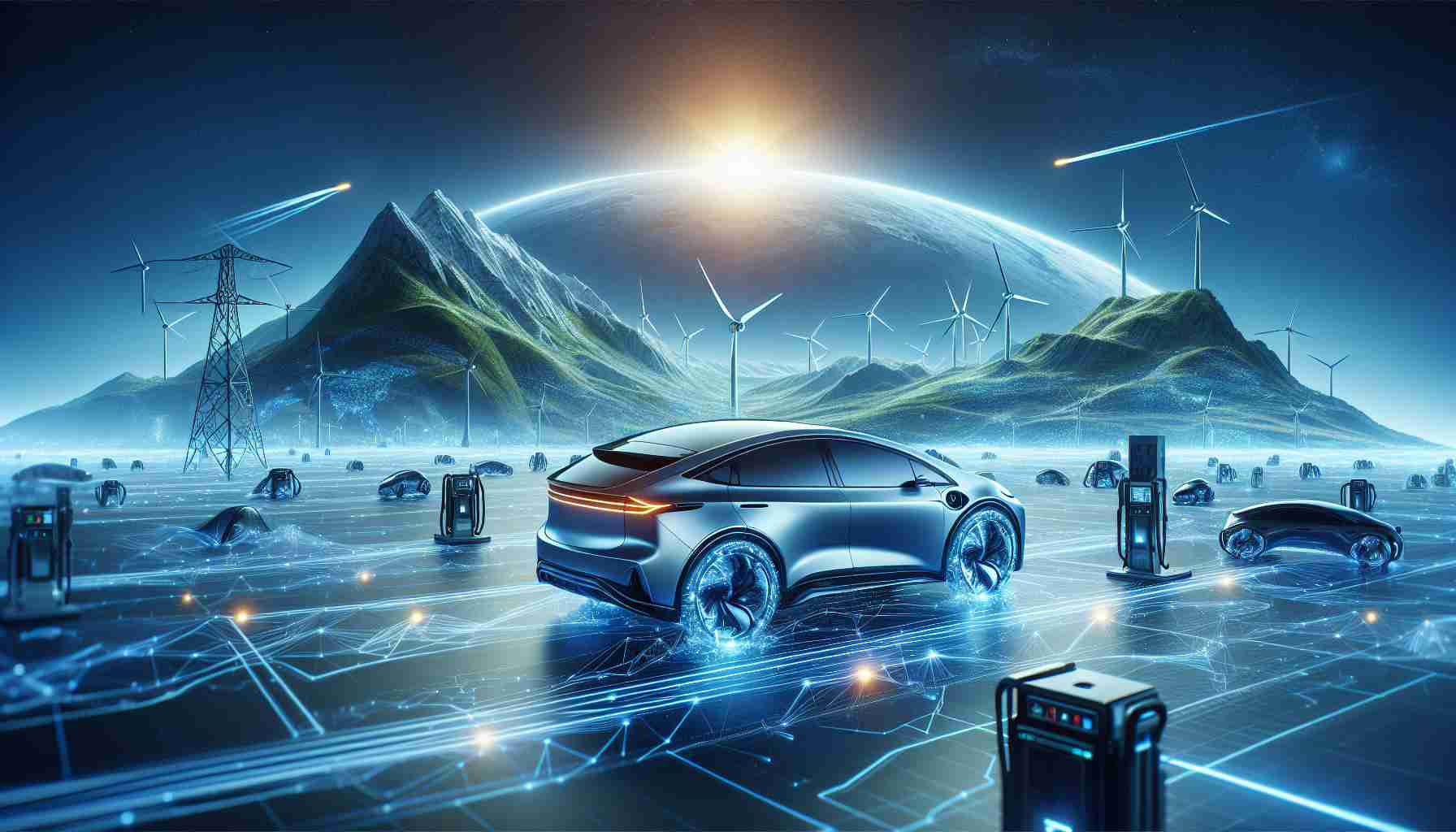- COBCO is a joint venture between CNGR Morocco New Energy and Al Mada, focusing on the production of battery materials for electric vehicles.
- The facility, opened near Jorf Lasfar, has a massive investment of $2 billion aimed at creating a sustainable battery supply chain.
- Production targets include nickel-cobalt-manganese materials, with an impressive annual output of 70 gigawatt-hours.
- This capacity is enough to power over 1 million electric vehicles each year.
- Future expansions will include lithium-iron phosphate materials and recycling technologies.
- The venture enhances Morocco’s role in the automotive industry and positions Chinese firms strategically within the EV market.
In an electrifying leap towards sustainability, a groundbreaking production facility has opened in Morocco, poised to reshape the electric vehicle (EV) landscape. The joint venture, named COBCO, is a collaboration between CNGR Morocco New Energy and Al Mada, targeting the lucrative markets of Europe and North America while cleverly circumventing heavy Western tariffs.
Nestled near Jorf Lasfar, this state-of-the-art facility began production of nickel-based battery materials, a vital ingredient for lithium-ion batteries. With an astonishing $2 billion investment, COBCO aims to build a sustainable battery supply chain, focusing initially on nickel-cobalt-manganese (NCM) components. Once fully operational, it is set to churn out an incredible 70 gigawatt-hours of energy annually—enough to power over 1 million electric vehicles!
But the innovation doesn’t stop there. Future plans are already in motion to expand production capabilities to include lithium-iron phosphate (LFP) materials and advanced recycling technologies. This strategic initiative not only enhances Morocco’s industrial prowess but also firmly places Chinese firms at the forefront of a rapidly evolving automotive sector.
Imagine a world where electric mobility reigns supreme, bolstered by a robust, local supply of battery materials. This Moroccan venture signifies a pivotal shift, fostering sustainability and transforming the global EV supply chain. With each battery produced, Morocco inches closer to becoming an essential hub in the race toward a greener future. Stay tuned—this revolution in electric mobility is just beginning!
The Future of Electric Vehicle Batteries: Morocco’s Game-Changing Facility
## Overview of COBCO and Its Impact on the EV Market
In an electrifying leap towards sustainability, Morocco has established the COBCO facility, a transformative joint venture between CNGR Morocco New Energy and Al Mada. This facility is strategically designed to address the burgeoning demands for electric vehicles (EVs) in Europe and North America, all while navigating the complex landscape of Western tariffs.
The facility, located near Jorf Lasfar, focuses on the production of nickel-based battery materials, essential for lithium-ion batteries. With an impressive initial investment of $2 billion, COBCO is set to create a sustainable supply chain focused on nickel-cobalt-manganese (NCM) components. Upon reaching full capacity, it is projected to produce 70 gigawatt-hours of energy each year, enough to power over 1 million electric vehicles.
Innovations and Future Plans
Innovations at COBCO don’t stop with the production of NCM materials. Future expansions include the manufacturing of lithium-iron phosphate (LFP) materials, known for their safety and longevity. Additionally, the facility is incorporating advanced recycling technologies, which are crucial in reducing environmental impact and improving resource efficiency.
Market Insights and Trends
As the global push for sustainability intensifies, battery production is a pivotal area of focus. The Moroccan initiative positions the country as a key player in the green technology sector, directly influencing the EV market dynamics. This move could also spark similar investments in battery production across Africa, thereby enhancing the continent’s economic landscape.
Key Specifications of the COBCO Facility
– Location: Jorf Lasfar, Morocco
– Initial Investment: $2 billion
– Annual Production Capacity: 70 GWh
– Battery Technologies Focus: NCM materials, LFP materials, advanced recycling
Security and Sustainability Aspects
Establishing a local battery production facility drastically reduces dependency on imports and enhances supply chain stability. Furthermore, by implementing recycling technologies, COBCO addresses sustainability concerns related to battery waste, promoting a circular economy.
Pricing and Market Forecasts
While specific pricing details on battery materials produced at COBCO have yet to be disclosed, the facility’s operational advantages and strategic location may lead to competitive pricing in the global market. Analysts predict that this venture will set off a chain reaction of investment in sustainable technologies across the region.
## Frequently Asked Questions
What are the environmental benefits of the COBCO facility?
The COBCO facility promotes sustainability by producing battery materials locally, thereby reducing transportation emissions and enhancing resource recovery through advanced recycling technologies. This can lead to lower carbon footprints for electric vehicles powered by these batteries.
How does COBCO plan to compete with established battery manufacturers?
COBCO’s unique value proposition lies in its strategic location, proximity to European and North American markets, and the potential to offer competitively priced, high-quality battery materials while avoiding heavy tariffs.
What implications does the COBCO facility have for the global EV market?
The establishment of COBCO signifies Morocco’s emergence as a crucial player in the EV supply chain, potentially leading to decreased reliance on Asian markets for battery materials. This could help stabilize prices and increase the availability of batteries for manufacturers worldwide.
For more insights on the latest developments in electric vehicle technology, visit EVS.














